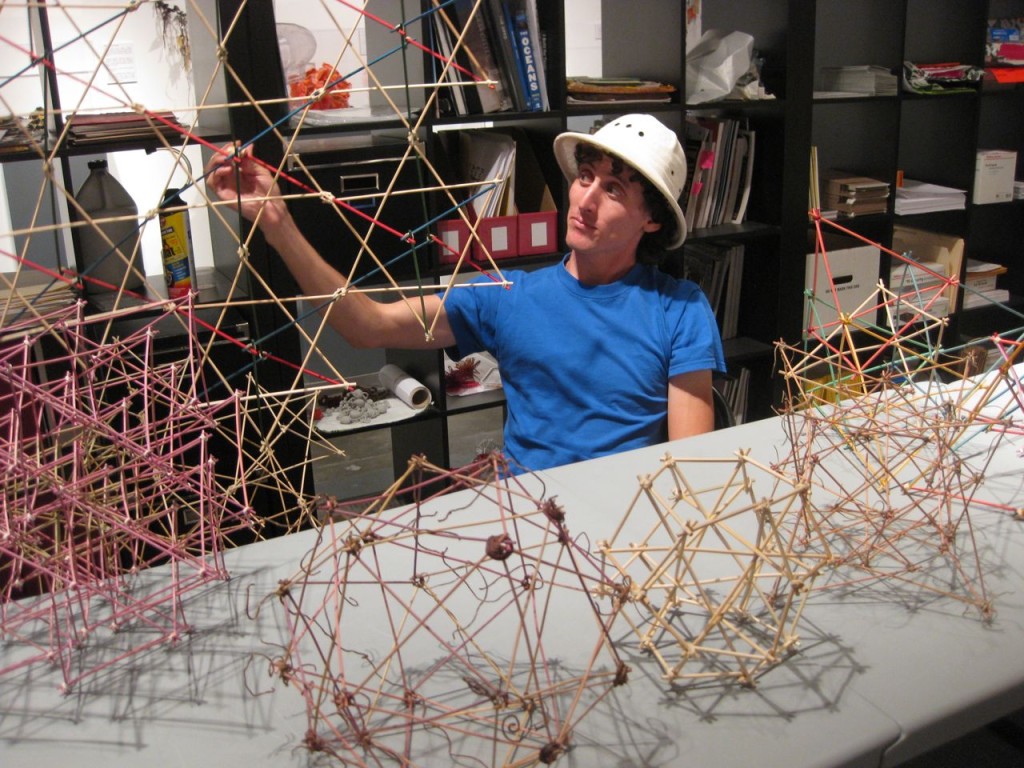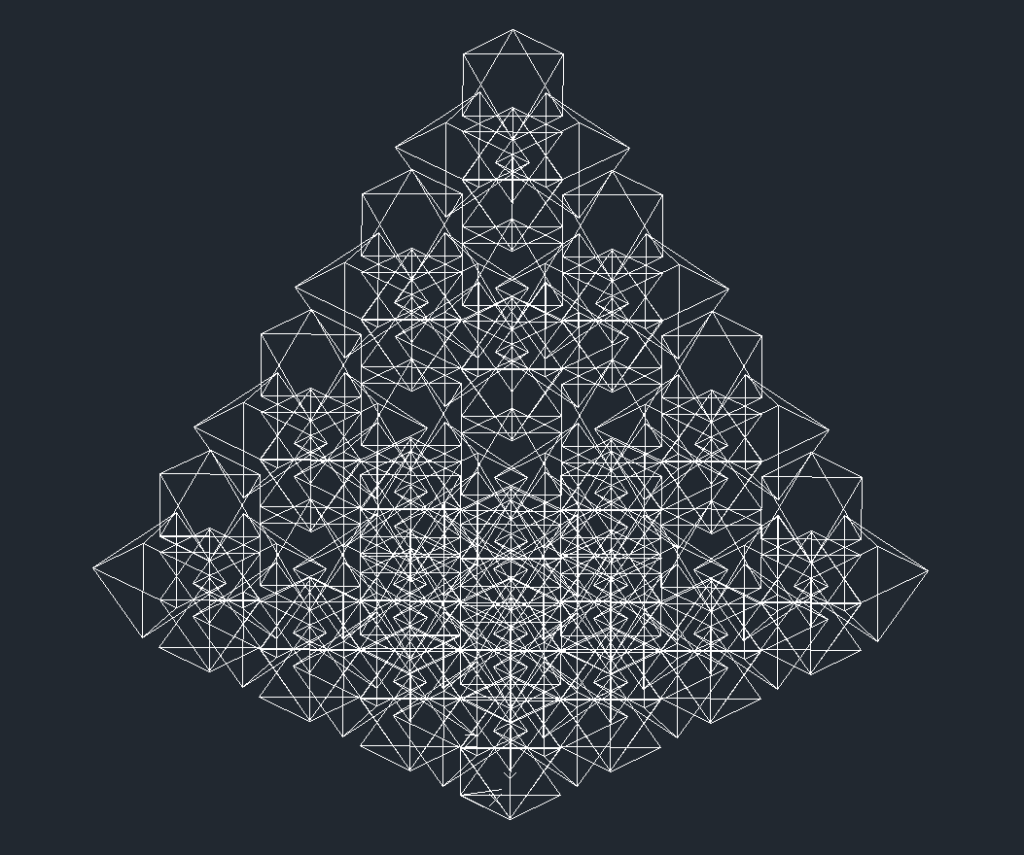For the past several years Jake Dotson has been developing ways to make structural frames from simple materials in order to make architecture more accessible to individuals, more independent of industry, more open to the natural world, and more pleasurable to build and inhabit. He models these crystalline networks out of bamboo sticks tied together with twine and rubber bands. From these humble tools Dotson weaves matrixes of tetrahedrons, octahedrons, cubes, and other regular polyhedra into elegant lattice-like configurations that resemble three-dimensional spider webs. Join us for a one-off workshop to learn how to make these beautiful and surprising structures. Workshop participants have the opportunity to contribute to a sculpture that will hang in the IFF’s making space exhibition. All builders will be credited on the resulting piece.
A $10 donation at the door is encouraged; however, no one will be turned away. Construction materials will be supplied. RSVP to mail@theiff.org recommended.
Jake Dotson describes himself as a Liberation Geometer. His work is informed by a lifetime spent in humanistic education, as a student as well as a teacher. His design practice developed through his ten-year apprenticeship with Culver City architect Gregg Fleishman. Of his bamboo structures he writes: They are really like crystalline springs! They strongly resemble tensegrity structures, and could be considered as the grandchildren of tensegrities in the way that they define geometric load circuits and utilize tension to maintain a form, but they are different; tensegrities are traditionally made from two completely different kinds of parts – struts and cables- serving as compression and tension members respectively, and exclusively. In my structures, all the parts are composed of a uniform elastic material (ideally bamboo) which are woven into 3D circuits, with each serving to carry compression or tension loads as needed. Sometimes I think of this as similar to the difference between AC and DC electric current.

